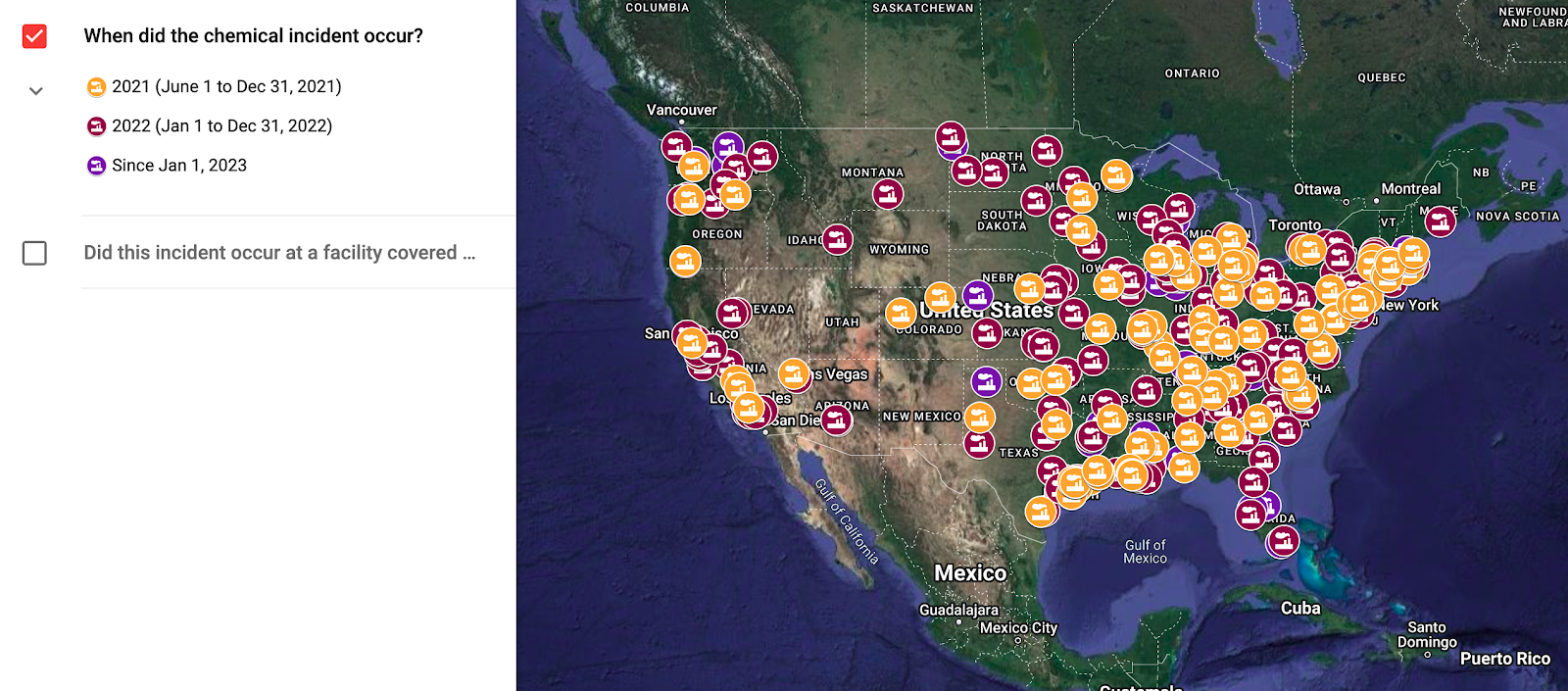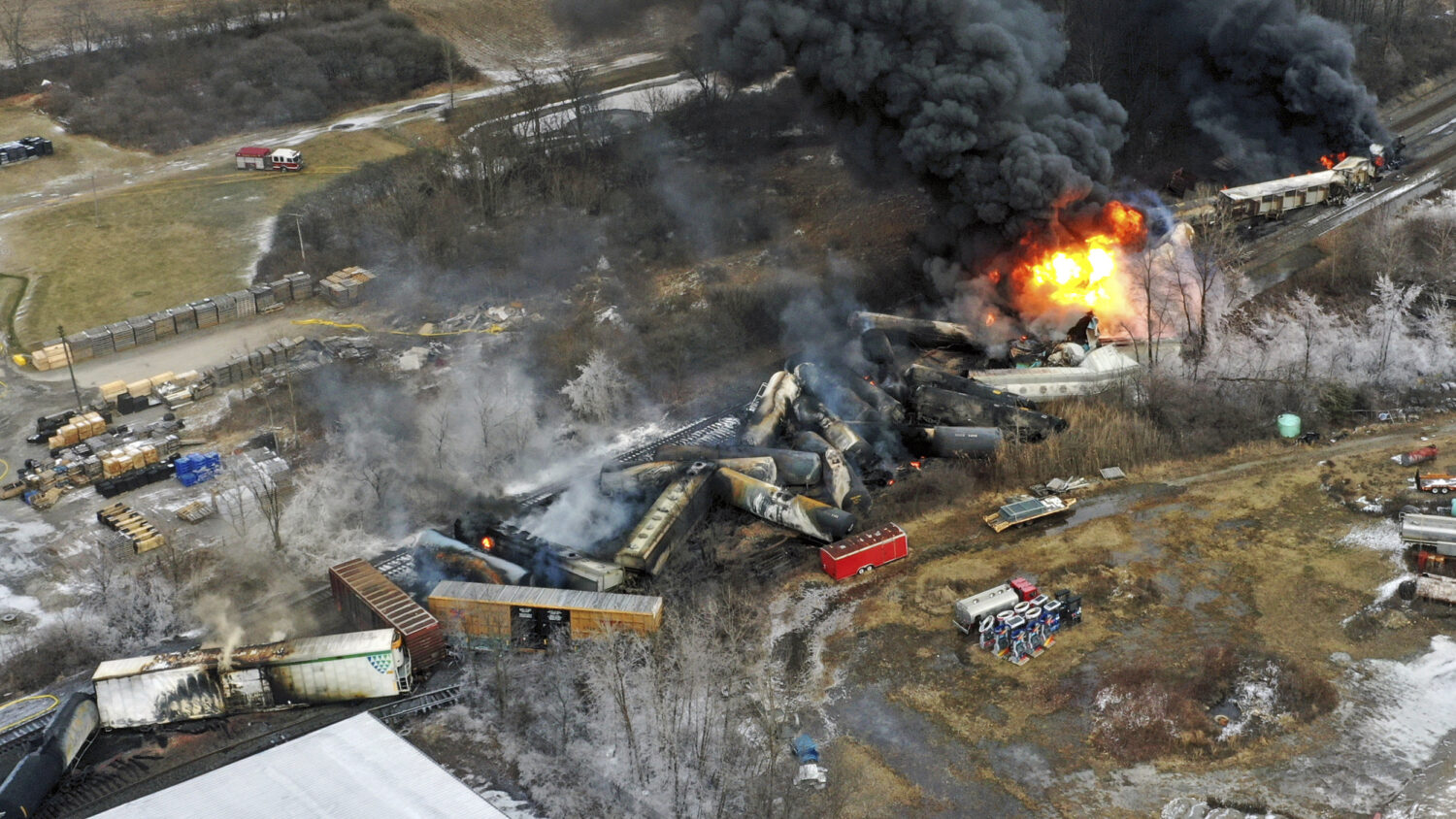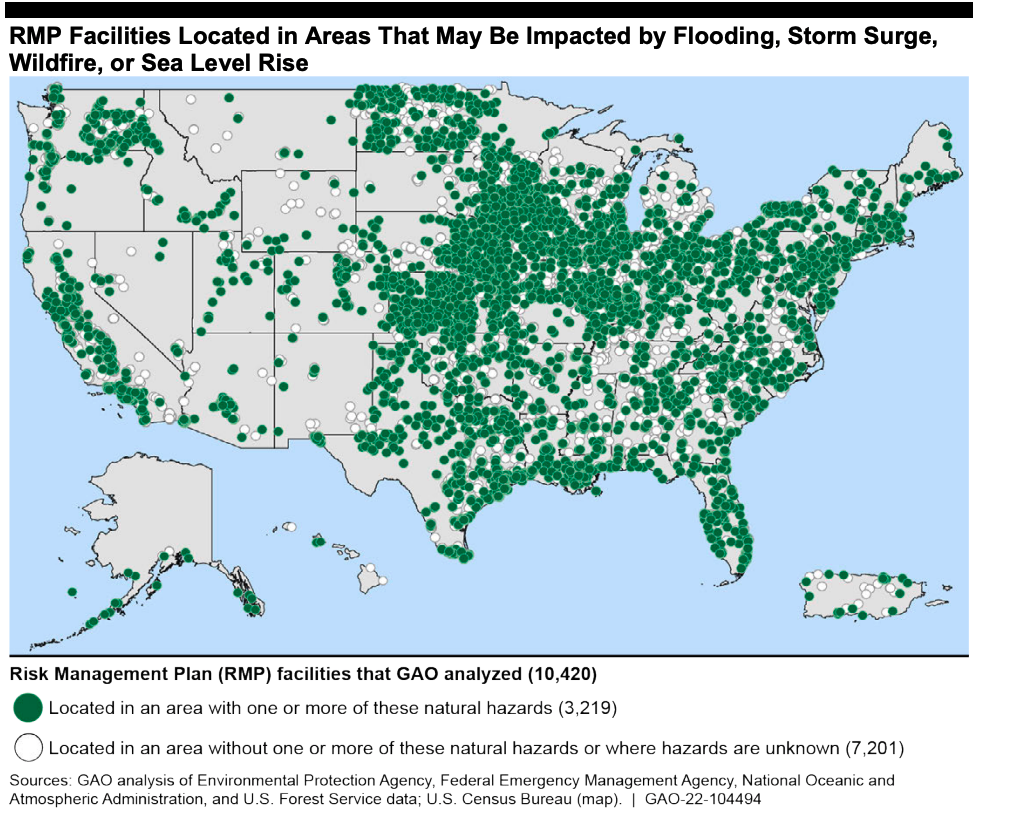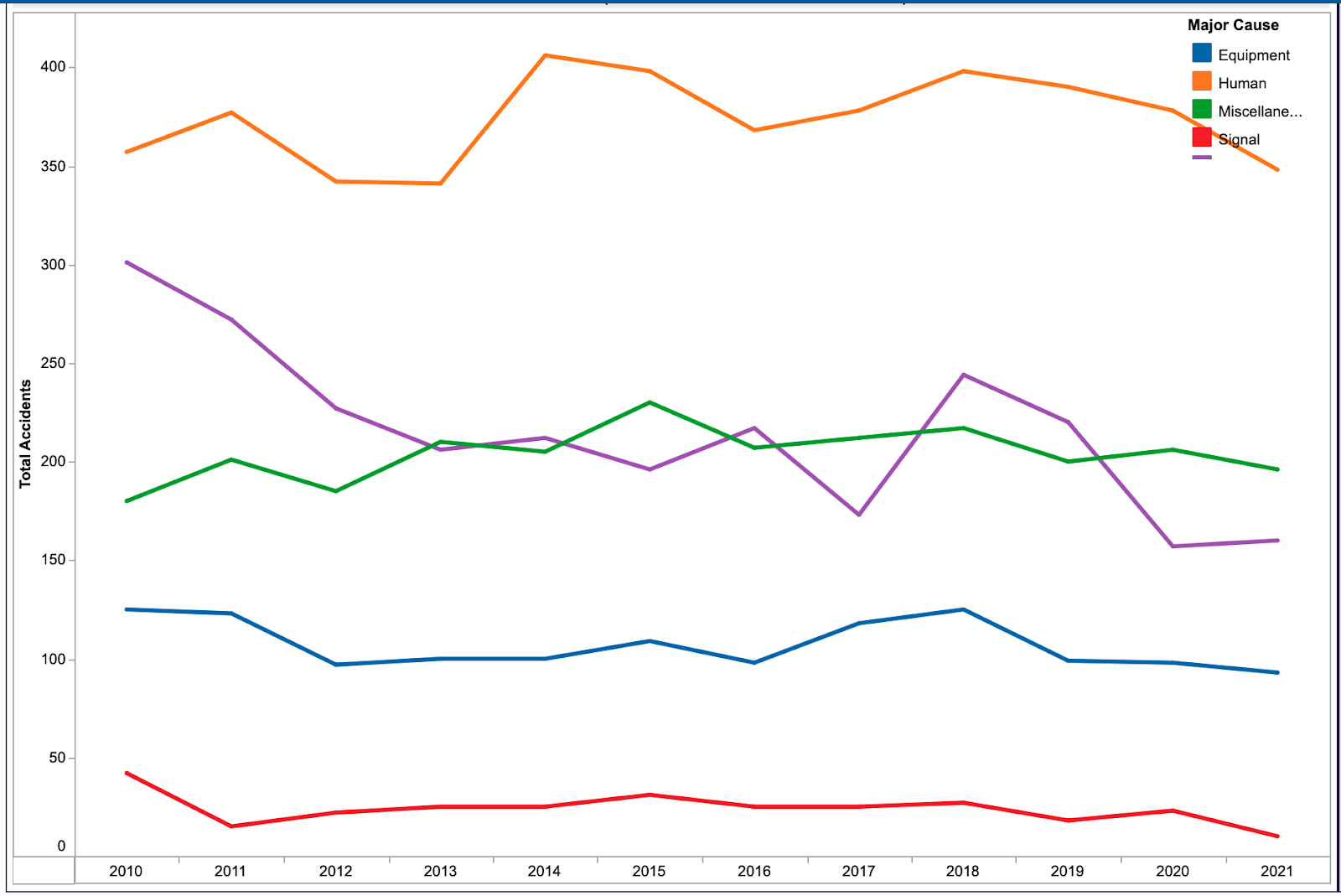
The Morning Meeting with Al Tompkins is a daily Poynter briefing of story ideas worth considering and more timely context for journalists, written by senior faculty Al Tompkins. Sign up here to have it delivered to your inbox every weekday morning.
The people of East Palestine, Ohio, are discovering what many communities nationwide have discovered: Hazardous chemicals travel right next to each of us every day, and pipeline ruptures, train crashes, truck wrecks and factory spills are more common than you might believe. Almost 124 million people (39% of the U.S. population) live within three miles of a hazardous facility.
Click here to see the closest hazardous facility near where you live. The Environmental Protection Agency says, “These facilities range from petroleum refineries and large chemical manufacturers to water and wastewater treatment systems; chemical and petroleum wholesalers and terminals; food manufacturers, packing plants, and other cold storage facilities with ammonia refrigeration systems; agricultural chemical distributors; midstream gas plants; and a limited number of other sources, including Federal installations,”
According to the EPA, there are 150 serious chemical incidents a year in the U.S. But most of the 10 U.S. rail incidents involving the release of chemicals over the last two years happened at or near the facility that produces the chemical.
Keep in mind, we all benefit from the chemicals that make the products we use and depend on. The American Chemistry Council puts it this way:
“People are understandably concerned and question why we ship chemicals, including those that are classified as hazardous materials,” said Chris Jahn, president and CEO of the ACC, in the statement. “We ship them because they are needed across the country and essential to everyday life. Chemicals are critical to providing safe drinking water, ensuring a plentiful food supply, producing life-saving medicines and medical equipment, and generating many types of energy.
The Guardian searched EPA records and data from the Coalition to Prevent Chemical Disasters and found:
In the first seven weeks of 2023 alone, there were more than 30 incidents recorded by the Coalition to Prevent Chemical Disasters, roughly one every day and a half. Last year the coalition recorded 188, up from 177 in 2021. The group has tallied more than 470 incidents since it started counting in April 2020.

Chemical spills that have occurred during the Biden Administration. (Coalition to Prevent Chemical Disasters)
The incidents logged by the coalition range widely in severity, but each involves the accidental release of chemicals deemed to pose potential threats to human and environmental health.
In September, for instance, nine people were hospitalized and 300 evacuated in California after a spill of caustic materials at a recycling facility. In October, officials ordered residents to shelter in place after an explosion and fire at a petrochemical plant in Louisiana. In November, more than 100 residents of Atchison, Kansas, were treated for respiratory problems and schools were evacuated after an accident at a beverage manufacturing facility created a chemical cloud over the town.
Among multiple incidents in December, a large pipeline ruptured in rural northern Kansas, smothering the surrounding land and waterways in 588,000 gallons of diluted bitumen crude oil. Hundreds of workers are still trying to clean up the pipeline mess, at a cost pegged at around $488m.
The federal government said last year that facilities listed on the federal Risk Management Plan, which includes companies and government facilities that produce and/or store hazardous materials, should consider how the effects of climate change might impact the safe storage and handling of hazardous materials. Here are the more than 6,000 facilities on the RMP:
The U.S. Chamber of Commerce says the number of hazardous incidents involving facilities on the EPA’s RMP map has been going down (even though the data is somewhat dated):
Of the more than 12,000 covered facilities under the RMP, the number of RMP incidents declined by more than 50% from 2007 to 2016, and almost 90% had no RMP incidents from 2007 to 2016. This is no doubt a testament to these resource investments and the business community’s commitment to their employees and communities.
Other resources:
Trends in cases of train accidents from 2010-2021: As you will see in the next chart, human error is by far the No. 1 cause of rail accidents in the United States. Over the years, track conditions and equipment failures have risen and fallen. Still, nothing comes close to human error as a cause.
- Federal Railroad Administration database of rail accidents and costs
- Good Jobs First: Violation Tracker
- U.S. Chemical Safety and Hazard Investigation Board
- Chemical Safety Board Investigations
- Coast Guard: National Response Center Database (spreadsheets by year)
- National Transportation Safety Board Hazardous Materials Accident Reports
- NOAA: Incident News
- Pipeline & Hazardous Materials Safety Administration (PHMSA): Incidents Database
- PHMSA Pipeline Failure Investigation Reports
- Preventing Disaster: Three chemical incidents within two weeks show urgent need for stronger federal safety requirements (Coming Clean, 2022)
- “Report Card” for Your Local Emergency Planning Committee
- Chemical Accident Prevention: EPA Should Ensure Regulated Facilities Consider Risks from
- Climate Change (Government Accountability Office, 2022)
- Tanks for Nothing: The Decades-Long Failure to Protect the Public from Hazardous Chemical
Spills (Center for Progressive Reform, 2021) - Living in the Shadow of Danger: State Scorecards (Center for Effective Government, 2015)
Get local with state data
- Alaska Statewide Oil and Hazardous Substance Spills Database
- Arizona Hazardous Materials Logbook
- California HazMat Spill Release Reporting Database
- Connecticut Spill Incidents
- Florida Hazardous Materials/Petroleum Spills
- Hawai’i Incidents
- Illinois Emergency Management Agency Hazardous Materials Incident Reports
- Indiana Spills List
- Kansas Spills Map
- Maine Spills and Site Cleanup and Spills & Site Cleanup Monitoring and Reporting
- Massachusetts Energy & Environmental Affairs Data Portal (includes enforcement and spills)
- Missouri Environmental Incident Search
- Nebraska Leaking Underground Storage Tanks and Surface Spills
- Nevada Site Cleanup Database
- New York State Spill Incidents Database
- North Carolina Underground Storage Tank Databases and Reports
- North Dakota Environmental Incidents Reports
- Ohio – Spills and Reported Releases
- Oregon Environmental Cleanup Site Information Database
- \South Dakota Environmental Events Database
- Tennessee Department of Environment & Conservation – Enforcement Program
- Texas Air Emissions Report Database
- Utah Environmental Incidents Database
- Vermont Spills List
- Washington State Spills Map
- Wisconsin Bureau for Remediation and Redevelopment Tracking System
- Wyoming Spills and Complaints











